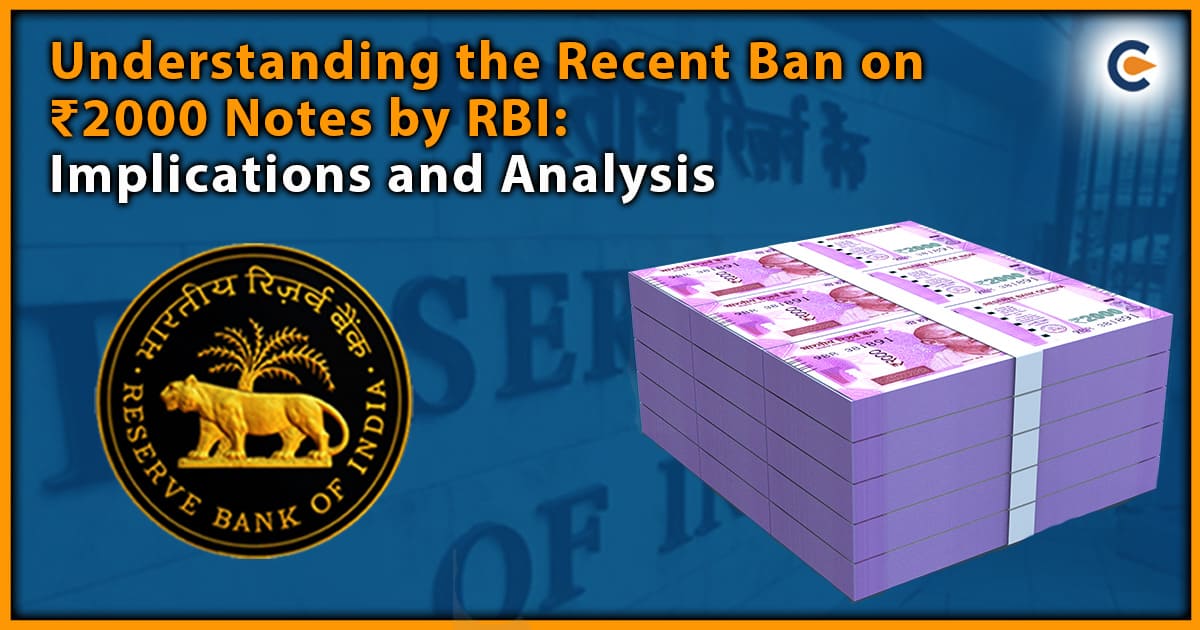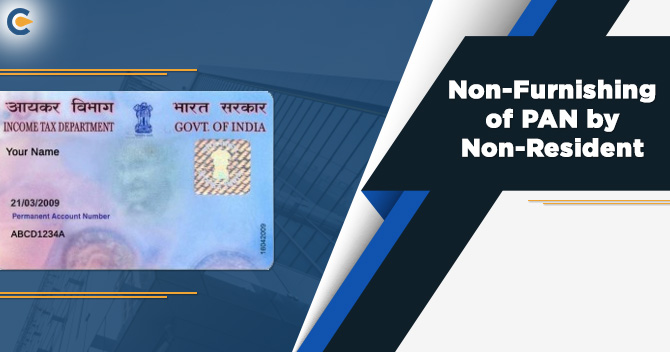The recent ban on ₹2000 notes by the Reserve Bank of India[1] (RBI) has caught the attention of the nation, sparking widespread speculation and debate about its implications for the Indian economy. Introduced just a few years ago as part of the demonetization drive, the ₹2000 notes were intended to facilitate large transactions and curb black money. However, the decision to ban these high-denomination notes has raised questions about the effectiveness of their initial purpose and the potential consequences of this move. In this blog post, we will delve into the details of the ban on ₹2000 notes, explore the rationale behind the decision, and analyze its implications for the Indian economy. By understanding the background and examining the potential effects, we aim to shed light on the significance of this move and its potential impact on various sectors. From the disruptions in cash-dependent sectors to the promotion of digital payments, we will analyze the challenges and opportunities presented by the ban on ₹2000 notes. Moreover, we will critically evaluate the decision and consider its potential implications for the informal economy, black money, and the overall financial landscape of India.
As we navigate through the intricacies of this recent development, it is essential to gain a comprehensive understanding of the ban on ₹2000 notes and its potential implications for the Indian economy. By analyzing the rationale behind this decision and considering its various effects, we can better comprehend the significance of this move and its potential long-term consequences.
Background And Rationale
The introduction of ₹2000 notes in 2016 was a significant step taken by the Indian government as part of its demonetization initiative. The aim was to tackle issues such as black money, counterfeit currency, and corruption. The demonetization drive involved the sudden withdrawal of the existing ₹1000 and ₹500 notes from circulation, which were replaced by newly introduced ₹2000 and ₹500 notes.
The ₹2000 notes were envisioned as a high-denomination currency that would facilitate large transactions, provide convenience in storing value, and deter counterfeiting due to their advanced security features. Additionally, the government hoped that the move would encourage the transition to a more digital and cashless economy.
However, the recent ban on ₹2000 notes by the RBI has raised questions about the effectiveness of these high-value notes and the rationale behind their discontinuation. The central bank has cited concerns regarding their potential misuse for illegal activities, including hoarding, money laundering, and financing terrorism. The decision to ban ₹2000 notes is driven by the objective of curbing these illicit practices and promoting a more transparent and accountable financial system. By discontinuing the circulation of ₹2000 notes, the RBI aims to discourage the accumulation of large amounts of cash, reduce the circulation of counterfeit currency, and encourage a shift towards digital transactions.
It is important to note that the rationale behind the ban is not limited to the specific denomination but rather focuses on addressing the broader issues of illegal activities associated with high-value currency. By taking this step, the RBI aims to strike a balance between ensuring financial integrity and safeguarding the interests of the economy as a whole. In the following sections, we will delve deeper into the implications of this ban and analyze its potential impact on various aspects of the Indian economy.
Implications For the Indian Economy
The ban on ₹2000 notes is expected to have several implications for the Indian economy. Let’s examine some of the key effects:
- Cash-dependent sectors: The ban may initially disrupt cash-dependent sectors, such as small businesses and informal markets, which heavily rely on high-denomination notes for daily transactions. These sectors may experience temporary difficulties as they adapt to alternative payment methods and lower denominations. However, this disruption could also accelerate the adoption of digital payment solutions and contribute to the government’s vision of a less cash-dependent economy.
- Cash circulation and liquidity: With the withdrawal of ₹2000 notes, there will be a decrease in the overall cash circulation and liquidity in the economy. This reduction might impact consumer spending and business transactions, at least in the short term, until the system adjusts to the new currency dynamics. However, the impact is likely to be temporary as the circulation of lower-denomination notes and digital transactions gain momentum.
- Digital payments: The ban on ₹2000 notes is expected to give a boost to digital payments as people and businesses shift towards electronic transactions. This move aligns with the government’s vision of a less cash-dependent economy and promotes the use of digital infrastructure for financial transactions. The increased adoption of digital payment methods could lead to greater transparency, efficiency, and convenience in financial transactions.
- Counterfeiting concerns: The discontinuation of ₹2000 notes may help in reducing the circulation of counterfeit currency, which has been a persistent problem in India. The new series of notes that will replace the ₹2000 denomination are expected to incorporate enhanced security features, making them more difficult to counterfeit. This could enhance the confidence of individuals and businesses in the authenticity of currency and strengthen the integrity of the financial system.
- Impact on monetary policy: The ban on ₹2000 notes could have implications for the implementation of monetary policy by the RBI. With a decrease in high-denomination notes, the central bank might need to adjust its strategies and instruments to effectively manage liquidity and regulate the money supply in the economy. This could involve a greater emphasis on alternative measures, such as interest rates, open market operations, and reserve requirements.
It is important to note that the implications of the ban on ₹2000 notes will vary across sectors and regions, and the extent of its impact will depend on the speed of adaptation to alternative payment methods and the effectiveness of measures to support the transition.
In the next section, we will analyse the ban on ₹2000 notes, considering the potential challenges and unintended consequences that may arise from this decision.
Analyzing The Ban
While the ban on ₹2000 notes aims to address concerns regarding illegal activities and foster a digital economy, it is important to consider the potential challenges and unintended consequences that may arise. Here are some key points for analysis:
- Currency replacement logistics: The replacement of ₹2000 notes with new denominations involves significant logistical challenges. The RBI needs to ensure the smooth transition of currency and minimize disruptions in the banking system to avoid inconveniencing the public. Adequate measures should be taken to ensure that there is a sufficient supply of new notes of lower denominations to meet the demand for everyday transactions.
- Black money implications: Critics argue that the ban on ₹2000 notes may not effectively address the issue of black money. Individuals involved in illicit activities can find alternative ways to store and move their wealth, such as converting it into other assets or using lower denominations. Combating black money requires a multi-faceted approach that includes measures beyond demonetization, such as improved tax enforcement, stricter regulations, and promoting transparency in financial transactions.
- Impact on the informal economy: The ban may disproportionately affect the informal sector, which relies heavily on cash transactions. Since this sector constitutes a significant portion of India’s economy, it is crucial to provide adequate support and alternatives to mitigate the potential negative consequences. Initiatives such as promoting financial inclusion, facilitating access to digital payment infrastructure, and offering training and assistance for transitioning to digital transactions can help minimize the disruption faced by the informal sector.
- Digital infrastructure readiness: The success of promoting digital payments as a result of the ban on ₹2000 notes relies on the readiness of the digital infrastructure in the country. Ensuring robust connectivity, expanding the reach of digital payment platforms, and enhancing cybersecurity measures are essential to foster a smooth transition towards digital transactions. Efforts should be made to address the digital divide and promote digital literacy to enable a wider section of the population to participate in the digital economy.
- Impact on economic growth: The ban on ₹2000 notes could have short-term implications for economic growth, as the adjustment period may witness disruptions in cash-dependent sectors. However, in the long run, the shift towards digital payments and greater financial transparency could contribute to increased economic efficiency, formalization of the economy, and improved tax compliance.
- Public awareness and education: Educating the public about the reasons behind the ban, the alternative payment methods available, and the benefits of transitioning to a less cash-dependent economy is crucial. Awareness campaigns and public outreach programs can help dispel misconceptions, alleviate concerns, and facilitate a smoother transition.
As the ban on ₹2000 notes unfolds, close monitoring of its impact, continuous evaluation, and timely adjustments to address challenges will be essential to ensure its effectiveness and mitigate any unintended consequences.
In the concluding section, we will summarize the key points discussed and provide insights into the overall implications and analysis of the ban on ₹2000 notes by the RBI.
Recommendations And Future Outlook
To navigate the implications of the ban on ₹2000 notes effectively, the government and the RBI should consider the following recommendations:
- Seamless currency replacement: The authorities should focus on ensuring a smooth transition by effectively managing the logistics of currency replacement. Timely distribution of new denominations and adequate communication to the public and businesses will be essential in minimizing disruptions.
- Support for cash-dependent sectors: The government should provide support and assistance to cash-dependent sectors, such as small businesses and informal markets, during the transition period. This could include facilitating access to alternative payment methods, promoting financial literacy, and offering financial incentives to adopt digital transactions.
- Strengthening digital infrastructure: To facilitate the shift towards digital payments, it is crucial to invest in robust digital infrastructure, promote digital literacy, and address any existing barriers or challenges that hinder the widespread adoption of digital transactions. This will enhance the efficiency, security, and convenience of digital payments.
- Comprehensive approach to tackling black money: While demonetization measures can play a role in curbing black money, they should be complemented with broader and sustained efforts. This includes strengthening tax enforcement, promoting transparency in financial transactions, and implementing measures to discourage illicit activities.
- Monitoring and evaluation: It is essential for the government and the RBI to closely monitor the impact of the ban on ₹2000 notes and evaluate its effectiveness. This will help in identifying any unintended consequences or areas that require further attention. Regular assessment and feedback from stakeholders will inform future policy decisions.
- Public awareness and education: As the transition progresses, it is crucial to conduct extensive public awareness campaigns and educational programs to familiarize the public with the new currency dynamics and promote the benefits of digital transactions. This will encourage a smoother adoption process and reduce resistance to change.
Conclusion
The recent ban on ₹2000 notes by the RBI has stirred a significant debate on its implications for the Indian economy. While the decision aims to address concerns regarding illegal activities and promote a digital economy, it also poses challenges that need to be effectively managed. By ensuring a smooth currency replacement process, providing support to cash-dependent sectors, strengthening digital infrastructure, and adopting a comprehensive approach to tackle black money, the authorities can mitigate the potential adverse effects and pave the way for a more transparent and resilient financial system.
As India moves forward with this significant monetary policy change, continued evaluation and analysis will be crucial to understand the long-term impact of the ban on ₹2000 notes and make any necessary adjustments along the way. With careful implementation and proactive measures, the country can strive towards achieving its goals of a more accountable, digitized, and inclusive financial landscape.
Read our Article:Understanding The Distinction Between Company Name And Trade Name











